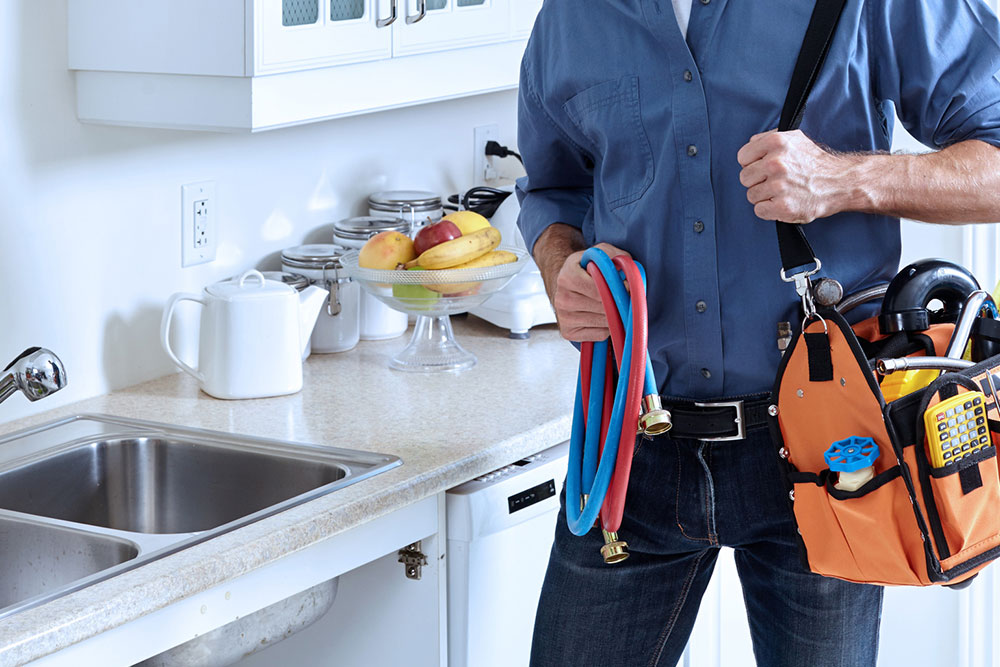7 benefits of hiring handyman services

Handyman service providers offer a wide array of services that help enhance homes. Some services include plumbing work, light fixture installation, drywall repair, flooring improvements, deck repairs, painting, HVAC maintenance, door repairs, tile replacements, furniture assembly, smart appliance setup, and hanging pictures. Now, many people would rather prefer to do these tasks by themselves to save time and money. Nevertheless, here are some top benefits of hiring handyman services for the home:
Convenience
Arguably, the main reason why people use handyman services is convenience. While home occupants go about their own work, they surely know that the professionals doing repairs or replacements in their house are doing so with utmost efficiency and precision. When someone hires a handyman service, they do not have to think about the task given to them as that is guaranteed to be finished on time.
Like a Swiss army knife, handyman service experts are adept at a whole range of home repairs and renovation tasks. This expertise and experience provide a level of convenience and competence for their clients that is unmatched.
Safety
Another key reason to choose handyman services is for personal safety. Home repairs and renovation can be a risky affair for people who attempt them on their own. Certain tasks, like roof cleaning, pressure washing, or door replacement, pose a high risk of falls and injuries.
Professional handymen are less likely to get injured as they have performed similar tasks multiple times in their careers and have developed expertise to complete them in time. These experts are well-versed in the proper use of dangerous equipment like welding machines or chainsaws, ensuring that no one, including themselves, is in danger while the task is being completed.
Home repair accidents are a major cause of injuries and, in some extreme cases, fatalities. Hiring a handyman takes these risks out of the picture for home occupants.
Wide range of skills
As alluded to earlier, handyman services cover everything from home repairs and maintenance to renovation and replacements. Although homeowners can take on some maintenance and minor fixes in painting, wiring, and plumbing, engaging in tasks like installing a light fixture, replacing broken windows, and installing kitchen cabinets need individuals with the skills to pull them off.
When one hires a company that provides handyman services, one will find people whose skill sets span plumbing, carpentering, painting, and other contractor-based tasks. One does not have to contact an electrician, plumber, carpenter, and other professionals separately to complete each task.
Time-efficient
Time is a major constraint in the lives of many homeowners. People often only have a weekend to themselves in the middle of their incredibly busy professional lives. Therefore, they generally plan to finish repairs and maintenance tasks in a couple of days. However, in many cases, people are unable to complete such tasks over just a weekend. Non-experts lack the speed and precision required to perform complex repairs and replacement tasks quickly and precisely. This is why hiring handyman services is the right choice.
Handyman professionals have completed numerous plumbing, wiring, and painting operations throughout their careers, which have become a part of their muscle memory. These experts do not even have to think when they automatically and robotically move from one step of a task to another without missing a beat. This means that repair and maintenance work is completed perfectly in an incredibly short amount of time.
Cost-effective
Contrary to popular belief, handyman services are not as expensive as people might think. In fact, attempting to carry out a plumbing task on your own, without the use of necessary tools and expertise, can end up costing more in repair and replacement costs. This is why it is advisable to hire an expert handyman to get the job done perfectly the first time around.
As mentioned earlier, employing the services can save you a significant amount of time. Moreover, by getting each task done correctly on the first attempt, professional handymen can also save homeowners a lot of money.
Reduced clutter for home dwellers
Due to rising costs and an increased emphasis to raise one’s standard of living, people often find themselves multitasking in both their professional and personal lives. People take on multiple jobs and projects to make extra money on the side, and when they come home, they do all the household work too. If there are children involved, then the amount of work and effort put in grows manifold. In short, people have too much on their hands already before they even contemplate doing home repairs and replacement work.
A handyman takes away these chores and performs them with conviction and expertise. That greatly reduces the sheer clutter people have in their lives already. As a result, hiring handyman services can give people assurance and put their minds at ease.
Precision, expertise, and right tools
Doing certain home repair tasks requires precision tools. One cannot use a hacksaw to trim the pieces of wood or solidified paint from various panels around their house. Similarly, specific kinds of screwdrivers are needed when plumbing work is attempted. Handyman service providers have all the right tools to perform any kind of task. Therefore, no work is left to chance.






